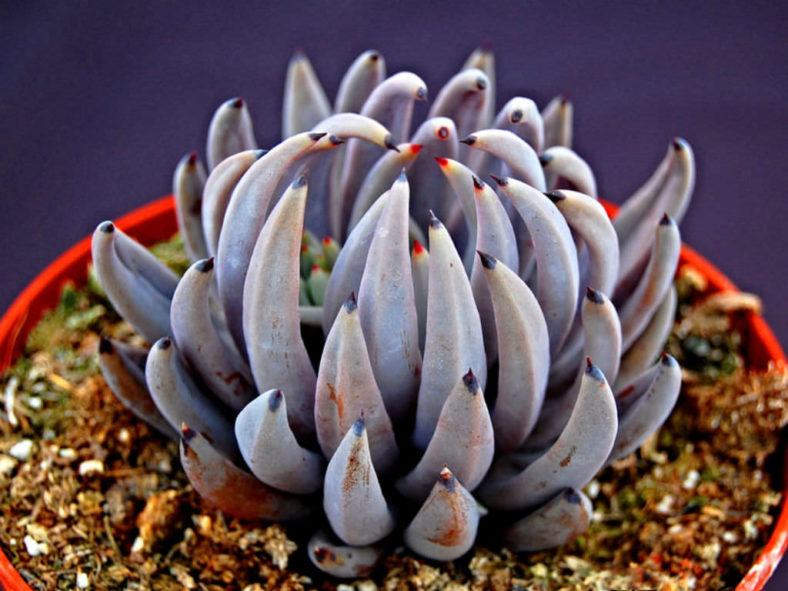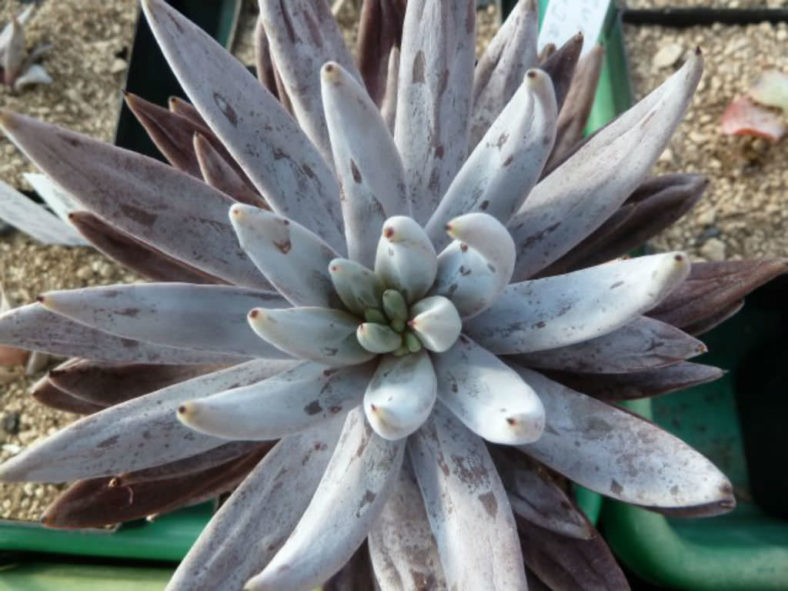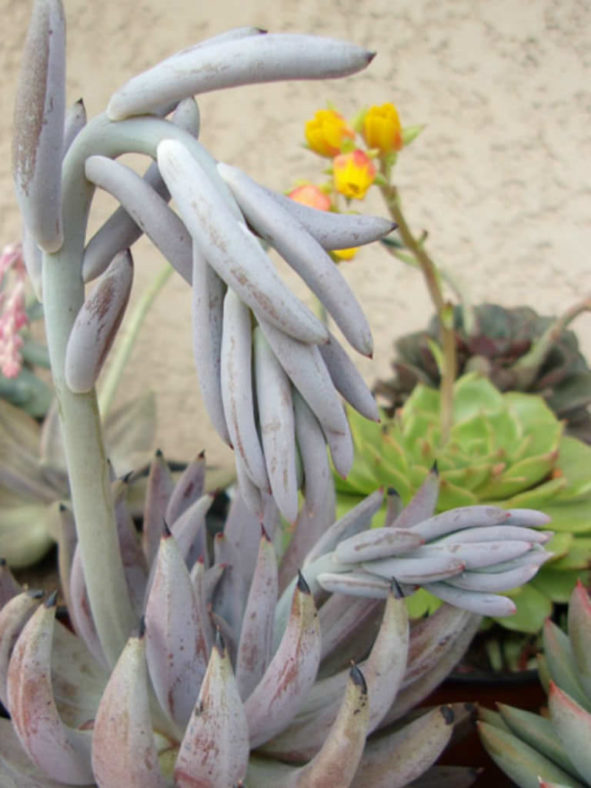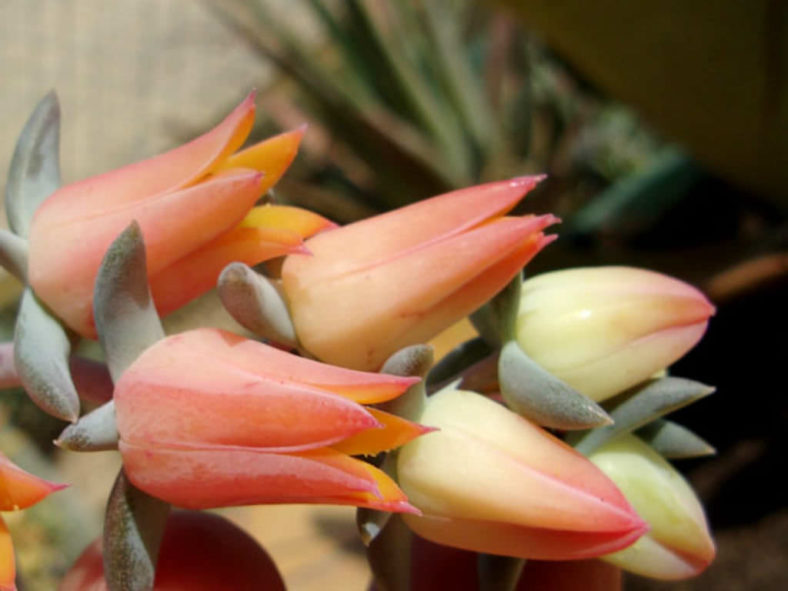Scientific Name
Echeveria unguiculata Kimnach
Scientific Classification
Family: Crassulaceae
Subfamily: Sempervivoideae
Tribe: Sedeae
Genus: Echeveria
Etymology
The specific epithet "unguiculata" (pronounced "un-gwee-kew-LAH-tuh") means "unguiculate, having nails or claws" and refers to the claw-like leaves of this species.
Origin
Echeveria unguiculata is native to Mexico. It occurs in Tamaulipas and San Luis Potosí.
Description
Echeveria unguiculata is a small succulent that forms a short-stemmed, usually solitary rosette of narrow, purplish-grey leaves with a thin, whitish bloom and a small, sharp, red or black tip. The stem is brownish and can grow about 2 inches (5 cm) tall and 0.6 inches (1.5 cm) in diameter. The rosette can reach a diameter of 4 inches (10 cm). The leaves are thick, fleshy, and lance-shaped, with the younger ones curving upward. They can measure up to 2.2 inches (5.5 cm) in length and 0.6 inches (1.5 cm) in width.
In late spring and summer, Echeveria unguiculata produces flowers with light salmon-pink petals and sepals the same colors as leaves at right angles to the corolla. The flowers are subcylindrical and can reach a length of 0.7 inches (1.7 cm) and a diameter of 0.35 inches (0.9 cm). They appear on unbranched, arching stalks that can grow up to 20 inches (50 cm) long.

How to Grow and Care for Echeveria unguiculata
Hardiness: USDA hardiness zones 9b to 11b: from 25°F (-3.9°C) to 50°F (10°C).
Echeverias make ideal potted plants but will also thrive in the ground. They need soil that drains quickly, which helps prevent moisture from rotting the roots. Many growers create their own potting mix. However, commercial cactus and succulent potting soil will work fine.
These succulents prefer full sun. However, try to avoid drastic changes in sunlight and full summer afternoon sun. Dramatic changes in lighting can stress plants out. If you move your Echeverias outside in the spring, do it gradually. The intense afternoon sun can cause sunburn. During the winter, when your succulents are inside, put them near the brightest window in your house. They will stretch if they do not have enough sunlight.
Echeverias are tender succulents. Many will tolerate several degrees below freezing, but growing them in the ground is not recommended if subjected to harsh conditions. You can keep them healthy during the cold months by moving them indoors. Then, once the threat of frost has passed, move them back outside in the spring.
Learn more at How to Grow and Care for Echeveria.
Links
- Back to genus Echeveria
- Succupedia: Browse succulents by Scientific Name, Common Name, Genus, Family, USDA Hardiness Zone, Origin, or cacti by Genus
Photo Gallery
Click on a photo to see a larger version.


